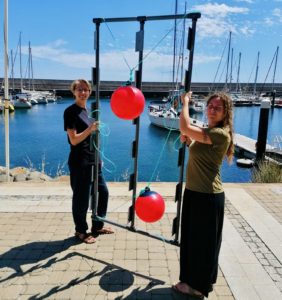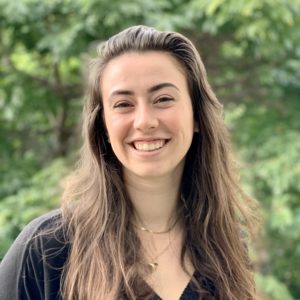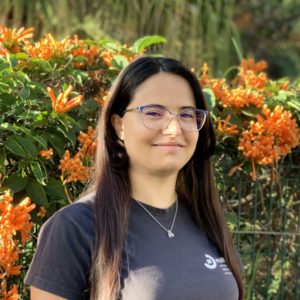Who cares about algae?
Meet the Team: Alejandro Bernal-Ibáñez

Alejandro Bernal-Ibáñez is a final-year (final month!) PhD student here at MARE-Madeira, supervised by Dr. Ignacio Gestoso and Dr. Eva Cacabelos. He’s studying the ecology and factors affecting the decline of Cystoseira species, brown macroalgae species that form marine forests in Madeira and the Mediterranean Sea today (and more abundantly in the past). I interviewed Alex to learn more.
So, Alex, marine ecology and marine biology – what’s the difference?
Ecology is the study of the relation between the abiotic and biotic factors, the relations between species, how they shape the environment and how the environment shapes the communities – it’s the study of all these relationships. It’s the interactions, the taxonomy, the oceanography and the biology. It’s part of marine biology, but it’s also more.
What are the most interesting things about marine ecology?
What I like the most is the experimentation. When you think about an experiment, you usually think about a lab with controlled conditions. But you can also do experiments in the field. This is something I like a lot.

I also find it really interesting how we find many of the same processes and patterns in the ocean as we do the land. Terrestrial environments are very well studied compared to the marine system, so what I like to do is understand the terrestrial patterns and then find them in the ocean. A good example described recently is pollination. Bees and butterflies pollinating in the terrestrial system is very well known, but no similar process had been described in the marine system until last year (Lavaut et al, 2022). Now we know that some crustaceans act as pollinators for algae in marine systems. They take the gametes from an algae and transport it to the other sex. Finding these patterns is something I like a lot about marine ecology, but it’s really difficult – you may have a well-described process in the terrestrial system that you think is simple, but to look for it in the marine system is not simple.
Why not?
To start with, we know much less about the species in the ocean compared to those on land, let alone the interactions between them. The number of species described in the ocean is less than 10% of the total, which is very, very low compared to the percentage of terrestrial species we know about (Mora et al, 2011). And we don’t even know all the terrestrial species. So imagine, if it’s hard to describe all the species on land, how hard it is to describe all the species in the remaining 70% of the surface of the planet — which is the ocean – and in areas that we can’t easily reach because of the pressure. There are kilometers and kilometers of unexplored areas in the ocean. And of course, if we don’t know what species are there, we can’t know the processes and interactions around them.
How about your research? What are you up to?
I’m studying the ecology of marine forests. Marine forests are formed by a group of brown macroalgae species. Marine forests include kelp forests, but it’s not just about kelp. Here in Madeira, in the coastal and tidal system, we have brown algae that are smaller but can have a similar function as kelp. We mostly have species of Cystoseira and Sargassum. I’m focused on Cystoseira species, which are found in the Mediterranean Sea, the west and north coast of the Iberian peninsula, and Macaronesia. These species have seen a clear decline in the last 20-30 years and are threatened by numerous factors, especially coastal development. In Madeira, coastal development is very high and especially in areas where Cystoseira can grow – rocky platforms. It’s those rocky platforms where we’ve developed the natural pools, the hotels. So the habitat for Cystoseira is getting very scarce around the coast.

Cystoseira in Madeira
What do we know about these species and why they’re important?
Audio clip where Alex and I dive into why conserving species is important! PG-13
The most important thing for me always is that they’re part of the system and are one piece more of biodiversity. If you lose them, you lose biodiversity. But yes, on a system-scale, they do a lot, too. In the ocean, algae and phytoplankton are the primary producers – the base of the pyramid that all herbivores, omnivores and carnivores depend upon. In the coastal system, algae are also the ecosystem engineers, as we call it, because they are a 3D complex and provide a substrate for many species. They are also the nursery – they’re where the fishes go when they are very, very small because outside is a jungle(!) and they stay there until they reach maturity. If we lose this habitat, we lose the nursery of fishes, which means we lose fish. There’s also a lot of other biodiversity associated with this species – molluscs, seahorses and crustaceans that live in this habitat. Then they act as a climatic refuge – and I’m not just talking about Cystoseira now, but also larger algae like the kelp forests. Think of a terrestrial forest – it’s cooler in the forest, no? It’s the same for the macroalgae. They can act as a refuge mitigating climatic events. Another important thing they do is act as defenses for coastal erosion. Imagine an area dominated by big algae, and when waves arrive, they slow down; these algae help protect the coast.
Is there a natural cycle within that climatic refuge point? As in, do the algae grow more in warmer waters? Such that as waters warm, there will be more macroalgae forests to cool it?
No, it’s mostly the opposite. There are algae that prefer cooler waters and others that prefer warm, but kelps – which create the largest forests – generally like colder waters. With climate change, they’re migrating to the poles and deeper colder areas. So we’re losing them in the southern limits because the water is getting warmer.
Where does your research fit into all this?
My research helps us understand the factors that can lead to the collapse of Cystoseira marine forests, and also aid their restoration. In Madeira, there’s been a degradation of the system since the 80’s and 90’s – we don’t know exactly how was the situation in the past because there weren’t many studies of the marine system in Madeira until the last 15-20 years, but we have enough pictures and descriptions to know there’s been a clear decline. My PhD is investigating the factors causing this decline. I’ve been focusing on habitat fragmentation, overgrazing of sea urchins because of overfishing, acidification, and I have a special focus on extreme climatic events – marine heat waves. I have been trying to understand how Cystoseira and the system around respond to those events. I have also been simulating marine heatwaves in the lab to see how they affect the adults and juveniles. This can help us understand the optimal conditions for juvenile recruitment and growth, as well as the places with the highest chances of restoration success.

Is anyone measuring success rates of restoration?
There aren’t many examples. More is known about kelp forest restoration; for Cystoseira, restoration efforts started only 10 or so years ago, so we don’t have enough information to know if those efforts are successful or not. But there was a study recently that addressed the success of restoration of Cystoseira species in the Mediterranean (Galobart et al, 2023) they recorded that the restored areas were able to bring back all the functions compared to non-disturbed areas. So there’s hope for restoration. Of course, this is a long-term ambition, because this species, and especially the full system, takes several years to grow and reach maturity. And restoration activities cannot be done if you don’t mitigate the impacts. And to mitigate the impacts, first you need to understand them. That’s my job.
Further reading
Mora et al., How many species are there on Earth and in the ocean? PLOS Biology (2011). https://doi.org/10.1371/journal.pbio.1001127
Galobart et al., Addressing marine restoration success: evidence of species and functional diversity recovery in a ten-year restored macroalgal forest. Front. Mar. Sci. 10 (2023). https://doi.org/10.3389/fmars.2023.1176655
Lavaut et al., Pollinators of the sea: A discovery of animal-mediated fertilization in seaweed. Science 377,528-530 (2022). DOI:10.1126/science.abo6661
Bernal-Ibáñez et al., Interaction of marine heatwaves and grazing on two canopy-forming algae. Journal of Experimental Marine Biology and Ecology 556,151795 (2022). https://doi.org/10.1016/j.jembe.2022.151795
Bernal-Ibáñez et al., The collapse of marine forests: drastic reduction in populations of the family Sargassaceae in Madeira Island (NE Atlantic). Regional Environmental Change 21:71 (2021). https://doi.org/10.1007/s10113-021-01801-2
Bernal-Ibáñez et al., The Role of Sea-Urchins in Marine Forests From Azores, Webbnesia, and Cabo Verde: Human Pressures, Climate-Change Effects and Restoration Opportunities. Frontiers in Marine Science 8 (2021). doi:10.3389/fmars.2021.649873





